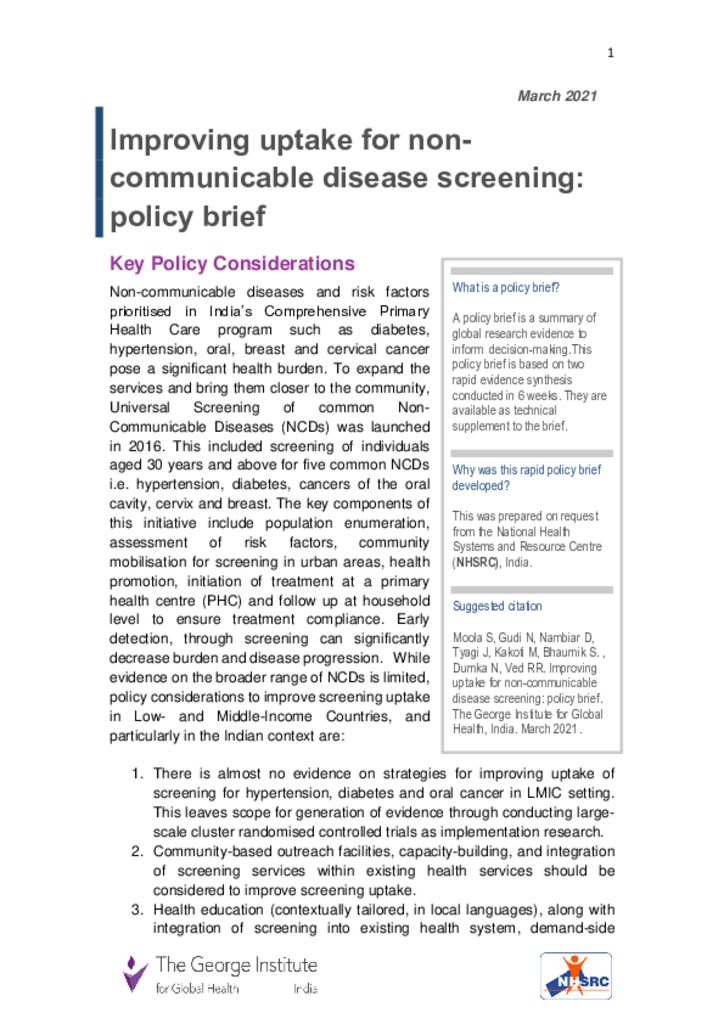
Improving uptake for non-communicable disease screening: policy brief
The Ministry of Health and Family Welfare (MoHFW) - under the Ayushman Bharat Comprehensive Primary Healthcare (CPHC) program - launched a population-based screening program for all men and women of age group thirty years and above, with a specific focus on hypertension, diabetes, oral, breast and cervical cancers. The National Program for Prevention and Control of Cancer, Diabetes, Cardiovascular Diseases and Stroke (NPCDCS) operational guideline states that appropriate strategies that combine effective outreach and facility based UPHC services should be developed for NCD screening in urban areas in PHCs and the community health centres (CHCs).
With the above context, this request was received from the National Health Systems Resource Centre (NHSRC). The requester communicated that the Union Ministry of Health was in the process of streamlining the National Health Mission (NHM) and this rapid review was requested to offer evidence on interventions to improve NCD screening uptake in urban areas under the National Programme on Prevention and Control of Cancer, Diabetes, Cardiovascular Diseases and Stroke.
In consultation with the requester, the remit of this review was defined for two components:
- Component I : Different strategies used to increase the uptake of screening for hypertension, diabetes, oral, breast and cervical cancers in adult patients over 30 years in urban areas
- Component II : Enablers and barriers of screening for hypertension, diabetes, oral, breast and cervical cancers in adult cancers in adult patients over 30 years in urban areas.
This review was completed in a span of one month and a few key policy considerations are:
- Community-based outreach facilities, capacity-building, and integration of screening services within existing health services should be considered to improve screening uptake.
- Health education (contextually tailored, in local languages), along with integration of screening into existing health system, demand-side.
- Improving access to screening services through various initiatives such as financial incentives (e.g. transport costs) or providing transportation could help create awareness and uptake.
- Ensuring privacy and having female health care workers or providers available at health facilities can address embarrassment related to the screening procedures. In addition, standard protocols to be followed.
- Encouragement to attend screening by other women in the community (particularly for cancers) or health care workers has been identified as an important facilitator for accessing and availing screening services



